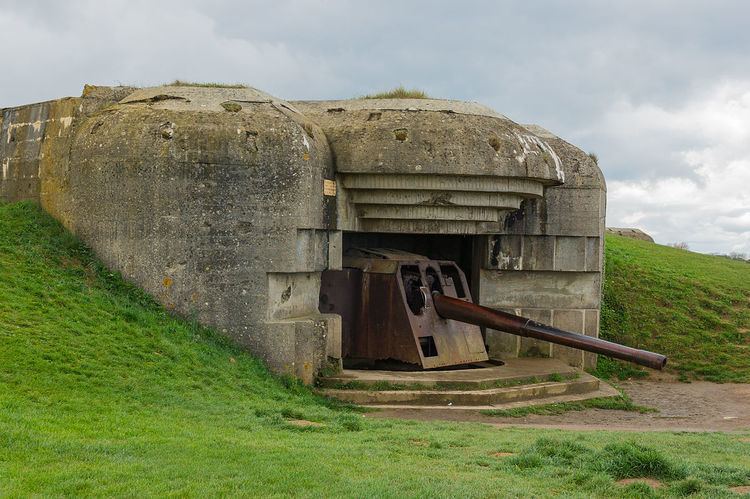In use 1944 Phone +33 2 31 21 46 87 | Year built 1944 | |
 | ||
Condition Four casemates with artillery plus observation bunker Hours Open today · Open 24 hoursSundayOpen 24 hoursMondayOpen 24 hoursTuesdayOpen 24 hoursWednesdayOpen 24 hoursThursdayOpen 24 hoursFridayOpen 24 hoursSaturdayOpen 24 hours Similar | ||
The Longues-sur-Mer battery was a World War II artillery battery constructed by the Wehrmacht near the French village of Longues-sur-Mer in Normandy. It formed a part of Germany's Atlantic Wall coastal fortifications.
The battery was completed by April 1944. Although constructed and manned initially by the Kriegsmarine, the battery was later transferred to the German army. The site consisted of four 152-mm navy guns, each protected by a large concrete casemate, a command post, shelters for personnel and ammunition, and several defensive machine-gun emplacements.
Normandy landings
The battery at Longues was situated between the landing beaches Omaha and Gold. On the night before the D-Day landings of 6 June 1944, the battery was subjected to a barrage comprising approximately 1,500 tons of bombs, although much of this landed on a nearby village. The bombing was followed from 0537hrs on the morning of the landings by bombardment from the French cruiser Georges Leygues as well as the U.S. battleship Arkansas. The battery itself opened fire at 0605hrs and fired a total of 170 shots throughout the day, forcing the headquarters ship HMS Bulolo to retreat to safer water. Three of the four guns were eventually disabled by British cruisers Ajax and Argonaut, though a single gun continued to operate intermittently until 1900hrs that evening. The crew of the battery (184 men, half of them over 40 years old) surrendered to the 231st Infantry Brigade the following day. The heaviest damage was caused by the explosion of the ammunition for an AA gun, mounted by the British on the roof of casemate No.4, which killed several British soldiers.
